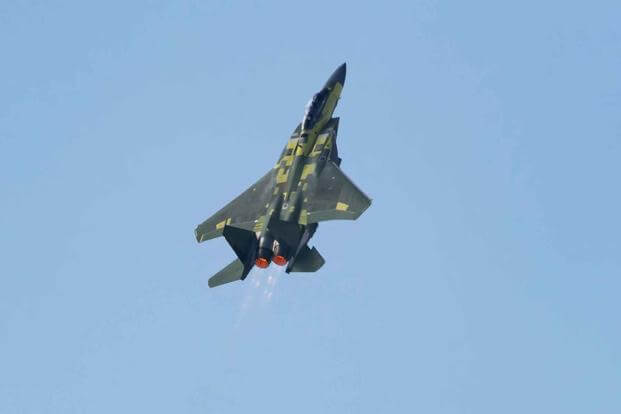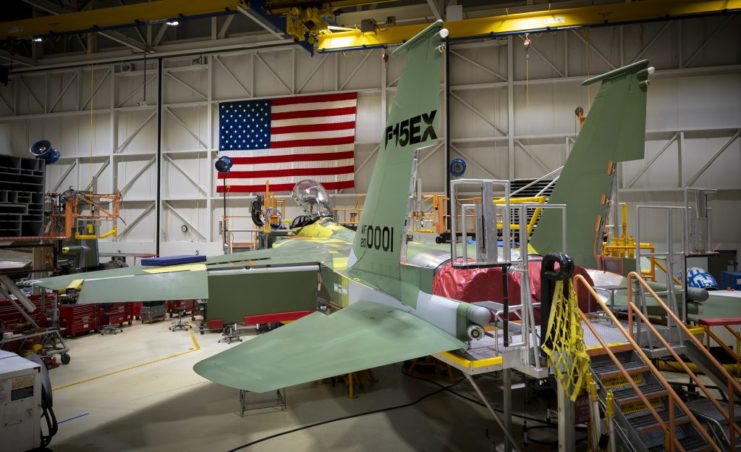The F-15EX, a fighter jet that will replace some older aircraft in the United States Air Force (USAF) was tested in Missouri in early February, and got more than a passing grade from officials anxious to put the old F-15 C/D fighter planes out to pasture.
The new plane, the F-15EX jet, spent 90 minutes in the air being tested by pilot Matt Giese, who put the aircraft through its paces in terms of software, avionics, and other new equipment. A team on the ground monitored Giese and the jet’s performance, and all aspects of the test flight were lauded by the experts of the USAF.
Boeing spokesman Todd Blecher said in a press release that the test “… proves the jet‘s safety and readiness to join our nation’s fighter fleet.” The release added that the F-15EX can “launch hypersonic weapons up to 22 feet long, and weighing up to 7,000 pounds.” It can also carry up to two dozen air to air missiles.

Just as importantly, the new aircraft can be upgraded as improvements in technology come along in the future without having to be grounded.
Boeing got the plum deal last July, worth 1.2 billion (USD). The contract covers not only eight jets, but also spare parts, training and technical data, delivery costs, and other expenses.
The F-15EX is what is known as a fourth generation jet, the USAF’s first in 20 years.
The F-15 C/D Eagle has been targeted for retirement since 2017. That year, officials from the military told the House Armed Services Subcommittee on Readiness that the Eagle had served America well for decades, but that they needed to be upgraded. Shortly thereafter, the competition to replace those jets was announced, Boeing entered, and was awarded the contract last summer.
The air force hopes to build a fleet of almost 150 new aircraft during the coming decade, but that will depend, in part, on budgets in the next few years, and how much money Congress gives the military to purchase new equipment in all its branches.
The fleet, according to air force officials, will one day include not only the F-15 EX jets, but also the F-22 Raptor, the F-16 Fighting Falcon, and others. The first two F-15 EX jets have arrived at the Elgin Air Force Base in Florida, and in the next few years the remaining six will arrive as well.
The F-15 EX is, military experts said at the time the contract was won by Boeing, “the most affordable and immediate way to refresh the capacity and update the capabilities provided by our aging F-15 C/D fleet…. (this jet) is ready to fight as soon as it comes off the line.”

Of course fighting at any time is something most government officials and military experts avowedly hope won’t happen. But like all countries, the United States has to ensure its armed services are equipped with the latest machines, guns, aircraft and other fighting gear necessary to enter combat.
Another Article From Us: Vikings Proved Not To Be The Blue Eyed Blonds History Has Recorded
To those of us on the “outside,” spending billions on military strength seems almost wrong, wasteful, even, if a country is not engaged in war. Why not invest that money in other areas of the economy instead, like health care and education? But it is precisely when a nation’s armed forces are anaemic that an enemy may strike, and even pacifists don’t want that. The protection of citizens costs a fortune, and inventory – like America’s new F-15EX – makes sure they stay protected, and that peace can continue.
